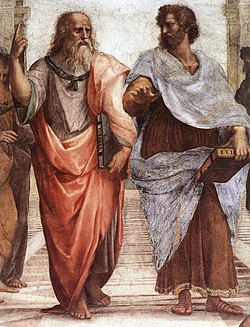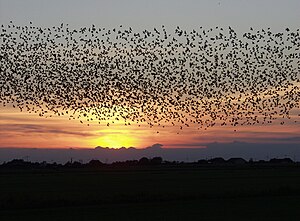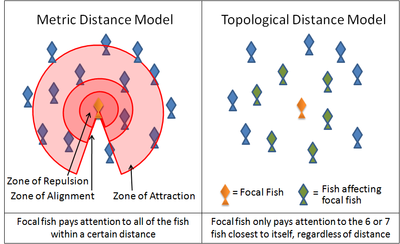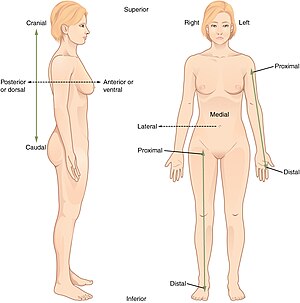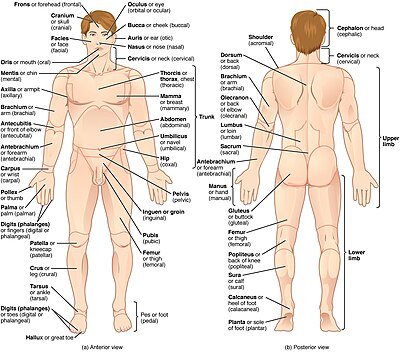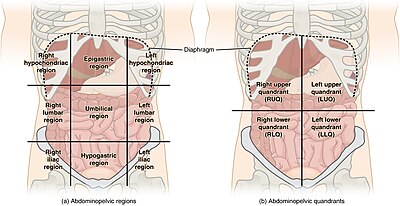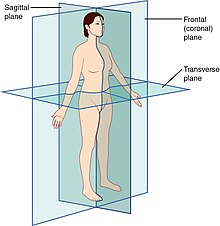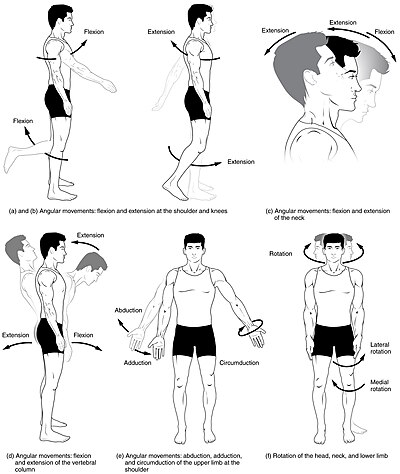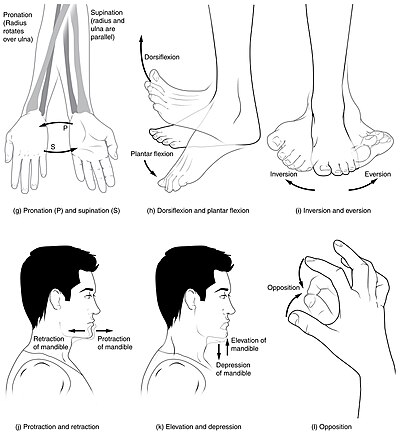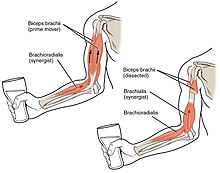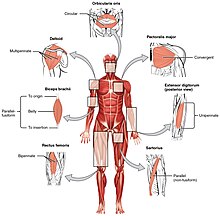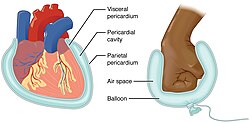Plato and Aristotle, depicted here in The School of Athens, both developed philosophical arguments addressing the universe's apparent order (logos)
Teleology or finality is a reason or explanation for something in function of its end, purpose, or goal. It is derived from two Greek words: telos (end, goal, purpose) and logos (reason, explanation). A urpose that is imposed by a human use, such as that of a fork, is called extrinsic. Natural teleology, common in classical philosophy but controversial today, contends that natural entities also have intrinsic purposes, irrespective of human use or opinion. For instance, Aristotle claimed that an acorn's intrinsic telos is to become a fully grown oak tree.
Though ancient atomists
rejected the notion of natural teleology, teleological accounts of
non-personal or non-human nature were explored and often endorsed in
ancient and medieval philosophies, but fell into disfavor during the
modern era (1600–1900). In the late 18th century, Immanuel Kant used the concept of telos as a regulative principle in his Critique of Judgment. Teleology was also fundamental to the philosophy of G. W. F. Hegel.
Contemporary philosophers and scientists are still discussing
whether teleological axioms are useful or accurate in proposing modern
philosophies and scientific theories. Example of reintroducing of
teleology in modern language is notion of attractor. For another instance in 2012, Thomas Nagel, who is not a biologist, proposed a non-Darwinian account of evolution that incorporates impersonal and natural teleological laws to explain the existence of life, consciousness, rationality, and objective value. Regardless, the accuracy can also be considered independently from the usefulness: it is a common experience in pedagogy
that a minimum of apparent teleology can be useful in thinking about
and explaining Darwinian evolution even if there is no true teleology
driving evolution. Thus it is easier to say that evolution "gave" wolves
sharp canine teeth because those teeth "serve the purpose of" predation
regardless of whether there is an underlying nonteleologic reality in
which evolution is not an actor with intentions. In other words, because
human cognition and learning
often rely on the narrative structure of stories (with actors, goals,
and proximal rather than distal causation), some minimal level of
teleology might be recognized as useful or at least tolerable for
practical purposes even by people who reject its cosmologic accuracy.
Etymology
The word teleology builds on the Greek τέλος, telos (root: τελε-, "end, purpose") and -λογία, logia, "speak of, study of, a branch of learning". The German philosopher Christian von Wolff coined the term (in the Latin form "teleologia") in 1728 in his work Philosophia rationalis, sive logica.
Historical overview
In western philosophy, the term and concept of teleology originated in the writings of Plato and Aristotle. Aristotle's Four Causes
give special place to each thing's telos or "final cause." In this, he
followed Plato in seeing purpose in both human and sub-human nature.
Platonic
In the Phaedo, Plato through Socrates
argues that true explanations for any given physical phenomenon must be
teleological. He bemoans those who fail to distinguish between a
thing's necessary and sufficient causes, which he identifies
respectively as material and final causes (Phaedo 98–99):
Imagine not being able to distinguish the real cause, from that without which the cause would not be able to act, as a cause. It is what the majority appear to do, like people groping in the dark; they call it a cause, thus giving it a name that does not belong to it. That is why one man surrounds the earth with a vortex to make the heavens keep it in place, another makes the air support it like a wide lid. As for their capacity of being in the best place they could be at this very time, this they do not look for, nor do they believe it to have any divine force, but they believe that they will some time discover a stronger and more immortal Atlas to hold everything together more, and they do not believe that the truly good and 'binding' binds and holds them together.
— Plato, Phaedo 99
Plato here argues that while the materials that compose a body are
necessary conditions for its moving or acting in a certain way, they
nevertheless cannot be the sufficient condition for its moving or acting as it does. For example, (given in Phaedo
98), if Socrates is sitting in an Athenian prison, the elasticity of
his tendons is what allows him to be sitting, and so a physical
description of his tendons can be listed as necessary conditions or auxiliary causes of his act of sitting (Phaedo 99b; Timaeus
46c9–d4, 69e6). However, these are only necessary conditions of
Socrates' sitting. To give a physical description of Socrates' body is
to say that Socrates is sitting, but it does not give us any idea why it came to be that he was sitting in the first place. To say why he was sitting and not not sitting, we have to explain what it is about his sitting that is good,
for all things brought about (i.e., all products of actions) are
brought about because the actor saw some good in them. Thus, to give an
explanation of something is to determine what about it is good. Its
goodness is its actual cause—its purpose, telos or "reason for which" (Timaeus 27d8–29a).
Aristotelian
Aristotle argued that Democritus
was wrong to attempt to reduce all things to mere necessity, because
doing so neglects the aim, order, and "final cause", which brings about
these necessary conditions:
Democritus, however, neglecting the final cause, reduces to necessity all the operations of nature. Now, they are necessary, it is true, but yet they are for a final cause and for the sake of what is best in each case. Thus nothing prevents the teeth from being formed and being shed in this way; but it is not on account of these causes but on account of the end....
— Aristotle, Generation of Animals V.8, 789a8–b15
In the Physics Aristotle rejected Plato's assumption that the universe was created by an intelligent designer using eternal forms
as his model. For Aristotle, natural ends are produced by "natures"
(principles of change internal to living things), and natures, Aristotle
argued, do not deliberate:
It is absurd to suppose that ends are not present [in nature] because we do not see an agent deliberating.
— Aristotle, Physics 2.8, 199b27-9;
These Platonic and Aristotelian arguments ran counter to those presented earlier by Democritus and later by Lucretius, both of whom were supporters of what is now often called accidentalism:
Nothing in the body is made in order that we may use it. What happens to exist is the cause of its use.
— Lucretius, De rerum natura (On the Nature of Things), IV, 833; cf. 822–56.
Disfavor
Since the Novum Organum of Francis Bacon,
teleological explanations in physical science tend to be deliberately
avoided in favor of focus on material and efficient explanations. Final
and formal causation came to be viewed as false or too subjective.
Nonetheless, some disciplines, in particular within evolutionary
biology, continue to use language that appears teleological when they
describe natural tendencies towards certain end conditions; although
some argue that these arguments ought to be, and practicably can be,
rephrased in non-teleological forms, others hold that teleological
language cannot always be easily expunged from descriptions in the life sciences, at least within the bounds of practical pedagogy.
Economics
A teleology of human aims played a crucial role in the work of Ludwig von Mises especially in the development of his science of praxeology.
More specifically he believed that human action, i.e. purposeful
behavior, is teleological based on the presupposition that an
individual's action is governed or caused by the existence of their
chosen ends. Or in other words an individual selects what they believe
to be the most appropriate means to achieve a sought after goal or end.
Mises however also stressed that teleology with respect to human action
was by no means independent of causality as he states "no action can be
devised and ventured upon without definite ideas about the relation of
cause and effect, teleology presupposes causality"
Modern and postmodern philosophy
Historically, teleology may be identified with the philosophical tradition of Aristotelianism. The rationale of teleology was explored by Immanuel Kant in his Critique of Judgement and, again, made central to speculative philosophy by Hegel and in the various neo-Hegelian schools – proposing a history of our species some consider to be at variance with Darwin, as well as with the dialectical materialism of Karl Marx and Friedrich Engels, and with what is now called analytic philosophy – the point of departure is not so much formal logic and scientific fact but 'identity'. (In Hegel's terminology: 'objective spirit'.)
Individual human consciousness,
in the process of reaching for autonomy and freedom, has no choice but
to deal with an obvious reality: the collective identities (such as the
multiplicity of world views, ethnic, cultural and national identities)
that divide the human race and set (and always have set) different
groups in violent conflict with each other. Hegel conceived of the
'totality' of mutually antagonistic world-views and life-forms in
history as being 'goal-driven', that is, oriented towards an end-point
in history. The 'objective contradiction' of 'subject' and 'object'
would eventually 'sublate' into a form of life that leaves violent
conflict behind. This goal-oriented, 'teleological' notion of the
'historical process as a whole' is present in a variety of 20th-century
authors, although its prominence declined drastically after the Second World War.
In contrast, teleological based "grand narratives" are eschewed by the postmodern attitude and teleology may be viewed as reductive, exclusionary and harmful to those whose stories are diminished or overlooked.
Against this postmodern position, Alasdair MacIntyre
has argued that a narrative understanding of oneself, of one's capacity
as an independent reasoner, one's dependence on others and on the
social practices and traditions in which one participates, all tend
towards an ultimate good of liberation. Social practices may themselves
be understood as teleologically oriented to internal goods, for example
practices of philosophical and scientific inquiry are teleologically
ordered to the elaboration of a true understanding of their objects.
MacIntyre's book After Virtue
famously dismissed the naturalistic teleology of Aristotle's
'metaphysical biology', but he has cautiously moved from that book's
account of a sociological teleology toward an exploration of what
remains valid in a more traditional teleological naturalism.
Ethics
Teleology informs the study of ethics.
Business ethics
Business people commonly think in terms of purposeful action as in, for example, management by objectives. Teleological analysis of business ethics leads to consideration of the full range of stakeholders
in any business decision, including the management, the staff, the
customers, the shareholders, the country, humanity and the environment.
Medical ethics
Teleology provides a moral basis for the professional ethics of
medicine, as physicians are generally concerned with outcomes and must
therefore know the telos of a given treatment paradigm.
Consequentialism
The broad spectrum of consequentialist ethics, of which utilitarianism is a well-known example, focuses on the end result or consequences, with such principles as utilitarian philosopher John Stuart Mill's
"the greatest good for the greatest number", or the Principle of
Utility. Hence, this principle is teleological, but in a broader sense
than is elsewhere understood in philosophy. In the classical notion,
teleology is grounded in the inherent natures of things themselves,
whereas in consequentialism, teleology is imposed on nature from outside
by the human will. Consequentialist theories justify inherently what
most people would call evil acts by their desirable outcomes, if the
good of the outcome outweighs the bad of the act. So, for example, a
consequentialist theory would say it was acceptable to kill one person
in order to save two or more other people. These theories may be
summarized by the maxim "the ends can justify the means."
Consequentialism stands in contrast to the more classical notions of deontological ethics, such as Immanuel Kant's Categorical Imperative, and Aristotle's virtue ethics
(although formulations of virtue ethics are also often consequentialist
in derivation). In deontological ethics, the goodness or badness of
individual acts is primary and a desirable larger goal is insufficient
to justify bad acts committed on the way to that goal, even if the bad
acts are relatively minor and the goal is major (like telling a small
lie to prevent a war and save millions of lives). In requiring all
constituent acts to be good, deontological ethics is much more rigid
than consequentialism, which varies by circumstances.
Practical ethics are usually a mix of the two. For example, Mill
also relies on deontic maxims to guide practical behavior, but they
must be justifiable by the principle of utility.
Science
In modern science, explanations that rely on teleology are often, but
not always, avoided, either because they are unnecessary or because
whether they are true or false is thought to be beyond the ability of
human perception and understanding to judge. But using teleology as an explanatory style, in particular within evolutionary biology, is still controversial.
Biology
Apparent teleology is a recurring issue in evolutionary biology, much to the consternation of some writers.
Statements implying that nature has goals, for example where a
species is said to do something "in order to" achieve survival, appear
teleological, and therefore invalid. Usually, it is possible to rewrite
such sentences to avoid the apparent teleology. Some biology courses
have incorporated exercises requiring students to rephrase such
sentences so that they do not read teleologically. Nevertheless,
biologists still frequently write in a way which can be read as implying
teleology even if that is not the intention. These issues have recently
been discussed by John Reiss. He argues that evolutionary biology can be purged of such teleology by rejecting the analogy of natural selection as a watchmaker; other arguments against this analogy have also been promoted by writers such as Richard Dawkins.
Some authors, like James Lennox, have argued that Darwin was a teleologist,
while others like Michael Ghiselin described this claim as a myth
promoted by misinterpretations of his discussions and emphasized the
distinction between using teleological metaphors and being teleological.
Biologist philosopher Francisco Ayala
has argued that all statements about processes can be trivially
translated into teleological statements, and vice versa, but that
teleological statements are more explanatory and cannot be disposed of. Karen Neander
has argued that the modern concept of biological 'function' is
dependent upon selection. So, for example, it is not possible to say
that anything that simply winks into existence without going through a
process of selection has functions. We decide whether an appendage has a
function by analysing the process of selection that led to it.
Therefore, any talk of functions must be posterior to natural selection
and function cannot be defined in the manner advocated by Reiss and
Dawkins. Ernst Mayr states that "adaptedness... is an a posteriori result rather than an a priori goal-seeking."
Various commentators view the teleological phrases used in modern
evolutionary biology as a type of shorthand. For example, S. H. P.
Madrell writes that "the proper but cumbersome way of describing change
by evolutionary adaptation [may be] substituted by shorter overtly
teleological statements" for the sake of saving space, but that this
"should not be taken to imply that evolution proceeds by anything other
than from mutations arising by chance, with those that impart an
advantage being retained by natural selection." J. B. S. Haldane
said, "Teleology is like a mistress to a biologist: he cannot live
without her but he's unwilling to be seen with her in public."
Selected-effects accounts, like the one Neander suggests, face
objections due to their reliance on etiological accounts, which some
fields lack the resources to accommodate. Many such sciences, which
study the same traits and behaviors regarded by evolutionary biology,
still correctly attribute teleological functions without appeal to
selection history. Gualtiero Piccinini
and Corey J. Maley are a proponent of one such account which focuses
instead on goal-contribution. With the objective goals of organisms
being survival and inclusive fitness, Piccinini and Maley define
teleological functions to be “a stable contribution by a trait (or
component, activity, property) of organisms belonging to a biological
population to an objective goal of those organisms.”
Cybernetics
Julian Bigelow, Arturo Rosenblueth, and Norbert Wiener have conceived of feedback mechanisms as lending a teleology to machinery. Wiener, a mathematician, coined the term 'cybernetics' to denote the study of "teleological mechanisms." Cybernetics is the study of the communication and control
of regulatory feedback both in living beings and machines, and in
combinations of the two. In the cybernetic classification presented in
"Behavior, Purpose and Teleology", teleology is feedback controlled
purpose.
The classification system underlying cybernetics was criticized by Frank Honywill George,
who cited the need for an external observability to the purposeful
behavior in order to establish and validate the goal-seeking behavior.
In this view, the purpose of observing and observed systems is
respectively distinguished by the system's subjective autonomy and objective control.
